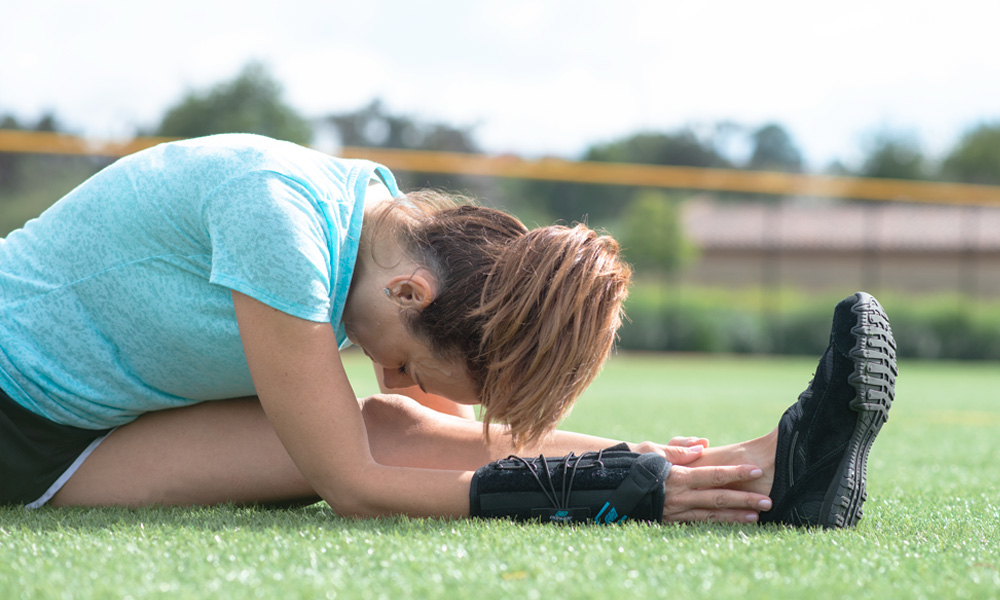Why Do You Need to Strengthen Your Hip Flexors?

Small but mighty, the hip flexors are vital for all athletes — contact and non-contact sports alike. And, because we're a society of sitting (desk job, community by car, sitting on the couch watching TV) our hip flexors tend to be tighter which can lead to low-back pain, hip pain, and injury. If left untreated, it could lead to a hip replacement. According to the American Academy of Orthopaedic Surgeons, hip replacements are on the rise in the United States.
Regardless of the activity, it's important to strengthen the hip flexors to be able to move and help prevent injury.
What Are the Hip Flexors?
The hip flexors are made of many muscles that move your legs and trunk together when bending (flexion movement). The hip flexors allow you to bring your legs or knees toward your torso as well as bend at the hips. It's a basic function of the human body.
If the muscle is weak, a hip flexor strain or tear can easily occur from a quick, reactive movement or sudden step gone wrong.
What Are the Hip Flexor Muscles?
The hip flexors combine the following muscle groups:
- Psoas major
- Iliacus muscle
- Rectus femoris muscle
- Pectineus muscle
- Sartorius muscle
Why Strengthen Your Hip Flexors?
When the hip flexors are weak, you're more prone to injury. Stretching and doing specific movements can help strengthen the hip flexors so you can be in a flexion position, or make a sudden move, without the tearing or straining the muscles.
A sedentary lifestyle and activities like running or cycling can lead to tight hip flexors and muscle imbalances, which may lead to low-back pain. In addition, a tight hip flexor can create an anterior pull on the pelvis which is known as an anterior pelvic tilt. An anterior pelvic tilt can cause postural issues and weakens the gluteus maximus, which can lead to an imbalance. Muscle spasms may occur too and limit your range of motion.
So, stretching and strengthening the muscles that are weak can balance the muscle groups and help prevent low-back pain, help improve posture, strengthen the gluteus max, and increase range of motion.
Hip Flexor Symptoms
While it may be hard to determine if the pain is a hip flexor issue or from a different muscle, here are a few symptoms to be aware of:
- Mild pain and pulling
- Cramping and sharp or severe pain
- Bruising
- Swelling
- Muscle spasms (in the case of a complete tear)
- Pain when coming up from a squat or after sitting for an extensive period.
- May have difficulty walking
How to Manage Hip Flexor Discomfort?
If you experience any discomfort, you should stop the activity and speak to your physician for a proper diagnosis.
Once diagnosed you and your physician should have a recovery plan. If it's a minor hip flexor strain, you can use PRICE (again, speak with a professional first).
PROTECTION
Protect your injury from getting worse or re-injury. You can use a brace or support to help with added protection.
REST
Take a few days off of your hip and avoid activities that may cause pain. This allows your hip to rest and help it from worsening.
ICE
Icing can aid in relieving pain and reducing inflammation. Apply immediately after you get injured for 20 minutes and then repeat every 3 to 4 hours for the next 2 to 3 days.
COMPRESS
Wearing a compression sleeve or support can help reduce swelling.
ELEVATE
Keep your leg higher than your heart as often as you can. This can help reduce any swelling or inflammation.
Find the right brace for your injury.
The contents of this blog were independently prepared, and are for informational purposes only. The opinions expressed herein are those of the author and are not necessarily indicative of the views of any other party. Individual results may vary depending on a variety of patient-specific attributes and related factors.




